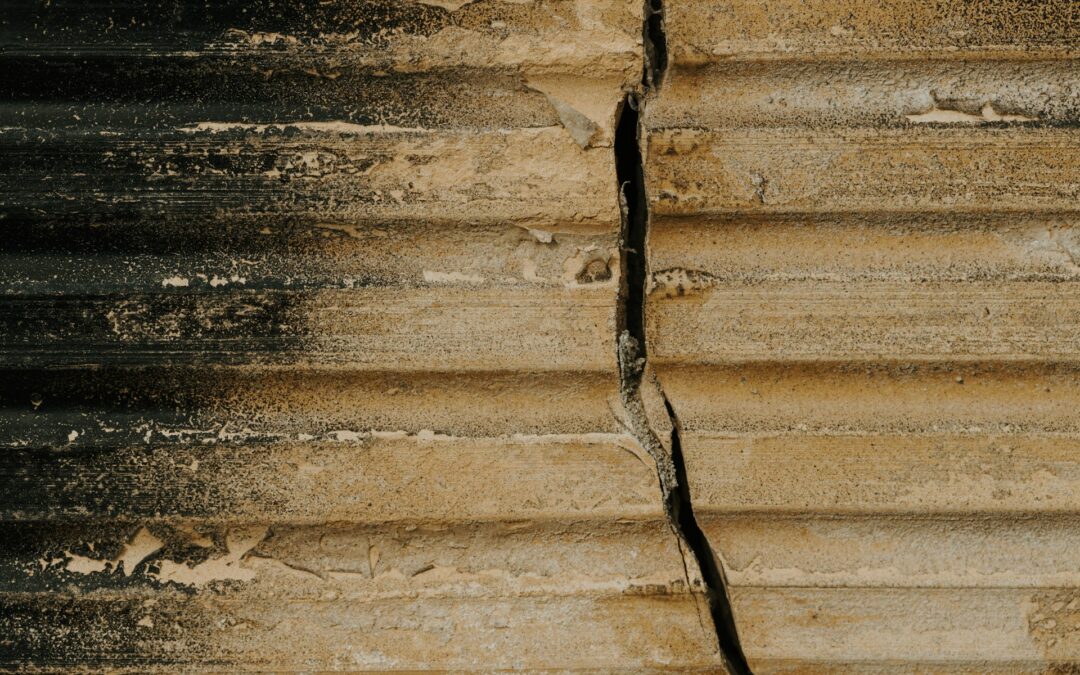Have you ever noticed a crack suddenly appearing in your wall and wondered what it truly means for your home? Cracks in walls are often overlooked, but they can be the first sign of larger issues hiding beneath the surface. Understanding these cracks is not just about aesthetics; it’s about recognizing potential structural problems before they escalate.
In regions like DFW, where the climate and soil types can widely vary, these cracks become even more common. Ignoring them is easy, but paying attention can save you from hefty repairs in the future. By knowing what different cracks indicate, you can stay ahead of major problems, keeping your home safe and sound.
Types of Cracks and What They Indicate
Wall cracks can appear in various forms, each telling its own story about your home’s current state. Let’s look at some common types and what they typically mean:
1. Vertical Cracks: These are usually less alarming as they often result from the natural settling process of a new home. However, if they grow over time or become wider, it’s a good idea to seek professional advice.
2. Horizontal Cracks: These are more concerning because they often suggest pressure on the walls. Such cracks can hint at serious foundation issues, especially if they run along the middle of a wall.
3. Diagonal Cracks: Found across walls and corners, these cracks often signify foundation movement. When the soil beneath shifts, it can tilt parts of the foundation, leading to diagonal cracking.
4. Hairline Cracks: Tiny and often running everywhere, hairline cracks might seem harmless. They’re usually due to minor shrinkage of plaster or mortar. If they start getting bigger, it’s wise to monitor them closely.
Recognizing these cracks helps in early diagnosis of potential issues. This understanding makes it easier to decide if you need minor touch-ups or a deeper investigation of your house’s foundation. Keep an eye on these signs, especially after heavy rains or temperature swings, when the soil might shift more noticeably. Proper awareness ensures that small cracks don’t turn into significant problems.
Common Causes of Wall Cracks
Wall cracks often appear due to a variety of reasons, and understanding these can help in addressing the issues before they worsen. In many cases, soil movement is a key contributor. For instance, expansive clay soils, which are common in areas like DFW, can swell or shrink with moisture changes, putting pressure on your home’s foundation. Moreover, temperature fluctuations play a big part. During hot summers, the soil may contract, while in rainy seasons, it expands, causing the foundation to shift.
Another factor to consider is moisture levels. Excess water from poor drainage or plumbing leaks can weaken the structure, leading to wall cracks. Even natural drying of paint or plaster can result in small, harmless cracks that don’t need immediate worry. But when combined with other factors like improper construction or inadequate ground preparation, these small issues might lead to bigger concerns.
When to Worry: Signs of Serious Foundation Problems
Not all cracks pose a significant threat, but some do require urgent attention. It’s crucial to recognize the signs that hint at serious foundation problems. Here are a few key indicators:
1. Sticking Doors and Windows: If doors or windows are hard to open or close, this could suggest foundation settling.
2. Uneven Floors: Sloping or bumpy floors often indicate foundation movement, which may need professional inspection.
3. Large, Expanding Cracks: Cracks that grow quickly or those that are wider than a quarter inch are usually red flags.
Getting ahead of these signs and scheduling a professional inspection can prevent further issues. Don’t wait until damage worsens. Timely action saves expenses and keeps your home’s structure intact.
Preventive Measures and Maintenance Tips
Prevention is always better than cure, especially when it comes to maintaining your home’s foundation. Here are some practical tips to prevent wall cracks:
- Ensure Proper Drainage: Make sure your gutters are clean and your drainage system diverts water away from your home’s foundation.
- Control Moisture Levels: Use a moisture meter to monitor the soil’s moisture content. If necessary, adjust watering patterns and fix leaks promptly.
- Regular Inspections: Look for new cracks or changes in existing ones regularly. This habit helps catch issues early.
- Maintenance Around the House: Regularly check and maintain the level of concrete around your home to prevent water pooling.
- Foundation Maintenance: During dry periods, it’s helpful to water the soil around your home slowly to maintain a balanced moisture content, helping prevent sudden shifts.
Taking these proactive steps ensures your home remains a haven, free from unexpected structural issues. Recognizing and addressing cracks early is a part of good home care, especially in regions where environmental factors greatly affect foundation stability.
Wrap-Up: Keeping Your Home Safe
In conclusion, understanding what wall cracks mean for your home is essential to maintaining its value and safety. By knowing the types of cracks, their causes, and when they signal bigger issues, you can take the necessary steps to keep your home in great shape.
It’s all about staying alert and not ignoring the signs. Regular checks and timely actions can make all the difference. Ensuring the stability of your home ensures its safety for years to come. Embracing these insights and tips allows you to keep your house both a safe and sound investment.
To keep your home in top condition and avoid serious structural issues, it’s essential to address any wall cracks promptly. If you’ve noticed signs of foundation trouble, such as those discussed, it’s a good time to consider professional help. For more information on house foundation repair and maintaining your home’s stability, trust Lift-Texas Construction to provide expert solutions. We’re here to help you ensure your home remains safe and sound.

